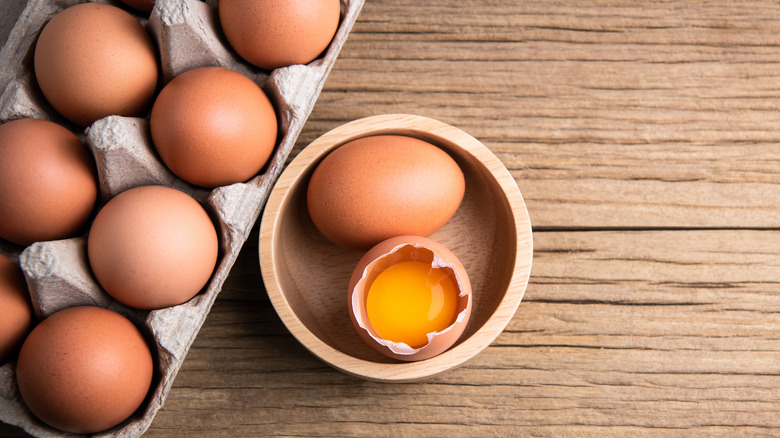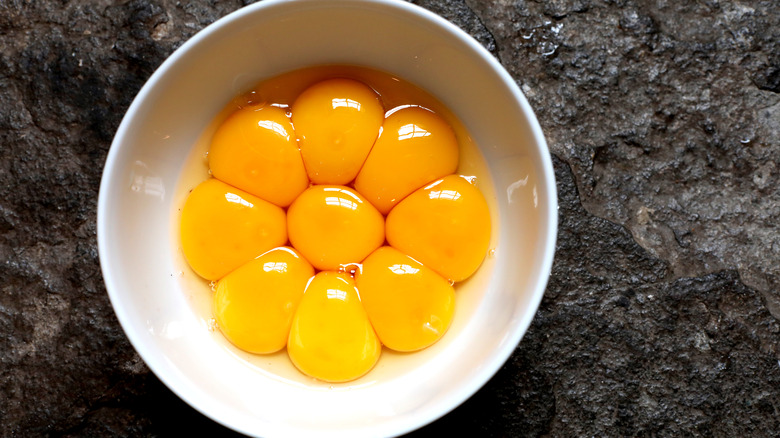Why Do Egg Yolks Come In Different Colors?
If you base your egg-buying decisions on whatever's on sale at the given time, you'll probably start to notice that different brands of eggs tend to vary by color. Some have brown and spotted shells, others are plain white, and when you crack them open, you might see ones with dark orange yolks, light colored yolks, and every shade of yellow in between.
While it is true that the breed of chicken influences the color of the egg shell, that is not the case for the egg yolks (via Reader's Digest). The color of the egg yolks directly correlates with the chicken's diet. For example, if chickens are eating yellow or orange-colored food, they will lay eggs that have darker-hued yolks. Although farmers aren't allowed to add artificial coloring into their chickens' feed, some have experimented with natural coloring in the form of marigold petals, red bell peppers, and paprika.
Is it true that darker egg yolks are better for you?
The use of healthy buzzwords for the sake of marketing is common in the food industry, but when it comes to eggs, they actually mean something. Eggs that are advertised as farm-fresh, all-natural, or cage-free are much richer in nutrients, and it shows in the color of their yolks. According to a study published in the Journal of Food Science (via Eat This, Not That), eggs with darker yolks contain higher levels of omega-3s and vitamins, a result of a diet rich in carotenoids and natural feed.
Eat This Not That explains that the cage-free living conditions marked on the label are usually an indicator of this type of diet. Pasture-raised hens, for example, are typically healthier than the average chicken, as their diet consists of grass, grasshoppers, and worms, rather than feed with a few marigold petals thrown in. For consumers, that translates to eggs that are not only nutrient-dense, but ones that have a more vibrant flavor. You might have to pay a little extra for them, but the darker the yolk, the better the egg.

